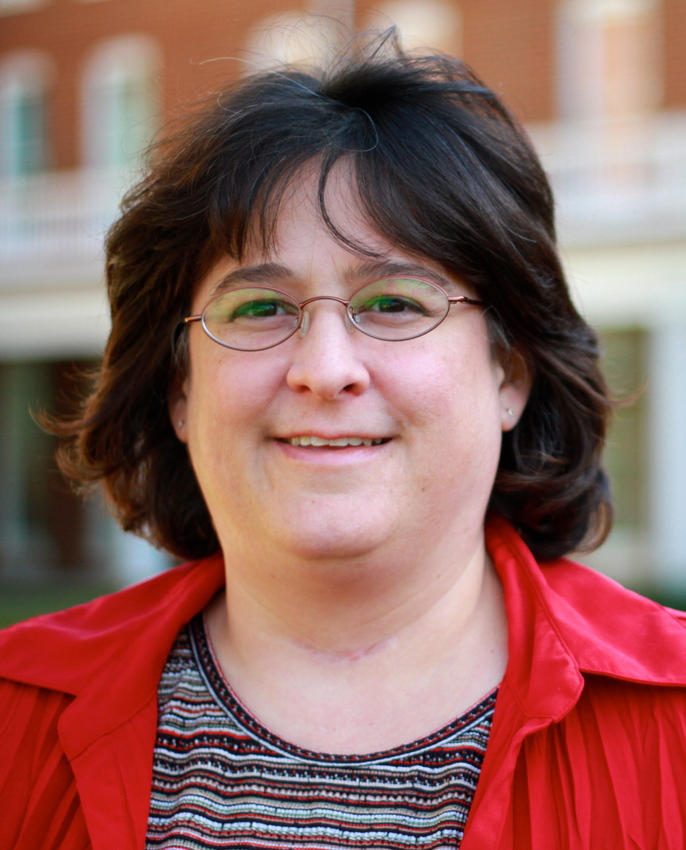
A Longwood University professor’s research might help middle-school teachers improve their students' scores on SOL mathematics tests.
Dr. Virginia Lewis, a former middle-school math teacher, analyzed 2007 and 2008 SOL test results for sixth, seventh and eighth grades to explain why students selected incorrect choices. The study, which she conducted for her doctoral dissertation, has since been presented at state and national conferences. The study provides information teachers could use to improve mathematics instruction.
"The most important thing I learned, and what I found most surprising, is the extent to which students are making problem-solving errors, which, depending on grade level, accounted for between 28 and 42 percent of incorrect responses," said Lewis. "I do not think teachers and principals are aware of the impact poor problem-solving skills has on their scores."
Students who answered incorrectly due to problem-solving errors incorrectly analyzed problem conditions or did not exercise "monitoring and control"—looking back over the process used to find their solution. "In other words, they are not reflecting on the problem," said Lewis.
"The best example of this is a problem about two shops selling T-shirts at different prices—the difference was 50 cents—the problem asks the student to determine the difference in total price if you buy four shirts. Twenty-five percent of sixth grade students chose 50 cents, instead of two dollars.
"They were able to correctly perform the decimal subtraction to find 50 cents but they let go mentally of the next step and did not multiply by four since you are buying four shirts. Once they solved the problem, they did not reflect on their process and the original question posed."
Teachers should focus on problem solving all year and across all content strands, said Lewis. "Because problem-solving impacts scores in all content strands, teachers will get a double dip when they focus instruction on developing problem-solving abilities. Teachers often focus on specific content, not broader, generalized processes like problem solving."
Conceptual errors—due to a lack of understanding of concepts and how concepts are related to each other—accounted for between 43 and 59 percent of incorrect responses, depending on grade level, which includes concepts from all of the content strands. "To reduce the percentage of conceptual errors, teachers need specific information about which concepts—i.e., fraction, perimeter, properties, mean, et cetera—within each of these strands is causing students difficulty."
"Even though students of mixed ability are incorrect with varying frequency, when they are incorrect, they are incorrect for the same reasons," said Lewis. "The percentage of incorrect responses due to conceptual or problem-solving errors was similar across all grade levels and pass levels, which surprised me. Some teachers might think advanced students do not need to improve their problem-solving abilities, but students at all pass levels will benefit from problem-based instruction."
Lewis also found procedural errors, which she described as errors when using mathematical routines, accounted for a surprisingly small percentage [10-16 percent] of incorrect responses. "Ironically, procedures are often the focus of mathematics instruction," she said.
The topic of Lewis’ dissertation, which she earned in 2011 at the University of Virginia, was prompted by her experience as a middle-school teacher in Powhatan County from 1998-2004.
"Nobody then was talking about why students miss questions; just that they do miss questions," she said. "That was the time when SOLs were getting ramped up, and we were always being told, ‘We need to improve the scores,’ but there was not a lot of good information on how to improve the scores. We became very frustrated. You want to get better but do not know how to get better."
Lewis, who received her bachelor’s degree at Longwood, prepares elementary and middle-school mathematics teachers. She has presented her findings at meetings of the National Council of Teachers of Mathematics and the Virginia Council of Teachers of Mathematics.

